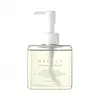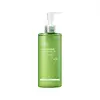What's inside
What's inside
 Key Ingredients
Key Ingredients

No key ingredients
 Benefits
Benefits

 Concerns
Concerns

 Ingredients Side-by-side
Ingredients Side-by-side

Ethylhexyl Palmitate
EmollientSorbeth-30 Tetraoleate
EmulsifyingTriethylhexanoin
MaskingCaprylic/Capric Triglyceride
MaskingOlea Europaea Fruit Oil
MaskingPogostemon Cablin Leaf Oil
MaskingRosmarinus Officinalis Leaf Oil
MaskingCaprylyl Glycol
EmollientCamellia Japonica Seed Oil
EmollientCandida Bombicola/Glucose/Methyl Rapeseedate Ferment
AntimicrobialEthylhexylglycerin
Skin ConditioningArgania Spinosa Kernel Oil
EmollientCamellia Sinensis Seed Oil
HumectantCocos Nucifera Oil
MaskingHelianthus Annuus Seed Oil
EmollientOryza Sativa Bran Oil
EmollientSimmondsia Chinensis Seed Oil
EmollientVitis Vinifera Seed Oil
EmollientWater
Skin ConditioningButylene Glycol
Humectant1,2-Hexanediol
Skin ConditioningSaponaria Officinalis Leaf Extract
AntimicrobialLimonene
PerfumingLinalool
PerfumingEthylhexyl Palmitate, Sorbeth-30 Tetraoleate, Triethylhexanoin, Caprylic/Capric Triglyceride, Olea Europaea Fruit Oil, Pogostemon Cablin Leaf Oil, Rosmarinus Officinalis Leaf Oil, Caprylyl Glycol, Camellia Japonica Seed Oil, Candida Bombicola/Glucose/Methyl Rapeseedate Ferment, Ethylhexylglycerin, Argania Spinosa Kernel Oil, Camellia Sinensis Seed Oil, Cocos Nucifera Oil, Helianthus Annuus Seed Oil, Oryza Sativa Bran Oil, Simmondsia Chinensis Seed Oil, Vitis Vinifera Seed Oil, Water, Butylene Glycol, 1,2-Hexanediol, Saponaria Officinalis Leaf Extract, Limonene, Linalool
Vitis Vinifera Seed Oil
EmollientCaprylic/Capric Triglyceride
MaskingSorbeth-30 Tetraoleate
EmulsifyingBrassica Campestris Seed Oil
Skin ConditioningCamellia Sinensis Seed Oil
HumectantMacadamia Ternifolia Seed Oil
EmollientTocopherol
AntioxidantWater
Skin ConditioningButylene Glycol
HumectantLeuconostoc/Radish Root Ferment Filtrate
AntimicrobialGlycerin
HumectantQuillaja Saponaria Bark Extract
CleansingSaponaria Officinalis Leaf Extract
Antimicrobial1,2-Hexanediol
Skin ConditioningLactobacillus
Skin ConditioningSalix Alba Bark Extract
AstringentBifida Ferment Lysate
Skin ConditioningParfum
MaskingVitis Vinifera Seed Oil, Caprylic/Capric Triglyceride, Sorbeth-30 Tetraoleate, Brassica Campestris Seed Oil, Camellia Sinensis Seed Oil, Macadamia Ternifolia Seed Oil, Tocopherol, Water, Butylene Glycol, Leuconostoc/Radish Root Ferment Filtrate, Glycerin, Quillaja Saponaria Bark Extract, Saponaria Officinalis Leaf Extract, 1,2-Hexanediol, Lactobacillus, Salix Alba Bark Extract, Bifida Ferment Lysate, Parfum
Ingredients Explained
These ingredients are found in both products.
Ingredients higher up in an ingredient list are typically present in a larger amount.
1,2-Hexanediol is a synthetic liquid and another multi-functional powerhouse.
It is a:
- Humectant, drawing moisture into the skin
- Emollient, helping to soften skin
- Solvent, dispersing and stabilizing formulas
- Preservative booster, enhancing the antimicrobial activity of other preservatives
Butylene Glycol (or BG) is used within cosmetic products for a few different reasons:
Overall, Butylene Glycol is a safe and well-rounded ingredient that works well with other ingredients.
Though this ingredient works well with most skin types, some people with sensitive skin may experience a reaction such as allergic rashes, closed comedones, or itchiness.
Learn more about Butylene GlycolCamellia Sinensis Seed Oil is the oil expressed from the seeds from the tea plant. This is the same plant we get green, black, and oolong tea from.
Camellia Sinensis Seed Oil is rich in oleic acid. This makes it an effective moisturizer. By drawing moisture to the skin, Camellia Oleifera Seed Oil helps keep your skin hydrated.
Other components of Camellia Sinensis Seed Oil includes Vitamin E and polyphenols. These are antioxidants that may help slow down the signs of aging. Antioxidants help fight free-radicals, or unstable molecules that can damage our skin cells.
Camellia Sinensis Seed Oil also has anti-inflammatory properties.
The seed oil comes from the dried kernels of the plant.
Learn more about Camellia Sinensis Seed OilThis ingredient is an emollient, solvent, and texture enhancer. It is considered a skin-softener by helping the skin prevent moisture loss.
It helps thicken a product's formula and makes it easier to spread by dissolving clumping compounds.
Caprylic Triglyceride is made by combining glycerin with coconut oil, forming a clear liquid.
While there is an assumption Caprylic Triglyceride can clog pores due to it being derived from coconut oil, there is no research supporting this.
Learn more about Caprylic/Capric TriglycerideWe don't have a description for Saponaria Officinalis Leaf Extract yet.
Sorbeth-30 Tetraoleate is a surfactant and emulsifier.
This ingredient is a tetraester from oleic acid and polyethylene glycol ether of sorbitol.
As an emulsifier, it helps ingredients such as oil and water mix together. This allows the dirt and oils in your skin to be washed away.
One study found pumpkin oil containing Sorbeth-30 Tetraoleate helped hydrate the skin and did not cause any irritation.
Learn more about Sorbeth-30 TetraoleateVitis Vinifera Seed Oil comes from the grape vine. Grape seeds are a byproduct of creating grape juice or wine.
The components of grape seeds have many skin benefits. Research has found it to be antimicrobial and anti-inflammatory. It also contains many potent antioxidants such as Vitamin E , Vitamin C, proanthocyanidins, polyphenols, flavonoids, and anthocyanins. Proanthocyanidin has been shown to help even out skin tone.
Antioxidants help fight free-radical molecules. Free-radical molecules are capable of damaging our cells and other genetic material. Antioxidants help stabilize free-radicals by donating extra electrons. Grape seed extract may help reduce the signs of aging.
The antimicrobial properties of grape seed may help treat acne. However, more research is needed to support this claim.
Grape seed has also been found to help absorb UV rays. Grape seed extract should not replace your sunscreen.
The fatty acids of grape seed oil give it emollient properties. Emollients help soothe and soften your skin by creating a film. This film traps moisture within, keeping your skin hydrated.
Learn more about Vitis Vinifera Seed OilWater. It's the most common cosmetic ingredient of all. You'll usually see it at the top of ingredient lists, meaning that it makes up the largest part of the product.
So why is it so popular? Water most often acts as a solvent - this means that it helps dissolve other ingredients into the formulation.
You'll also recognize water as that liquid we all need to stay alive. If you see this, drink a glass of water. Stay hydrated!
Learn more about Water